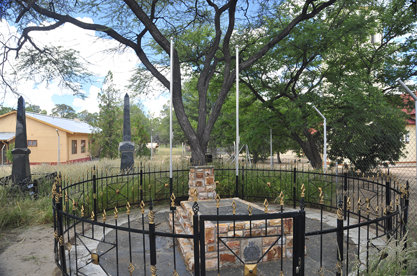Jonker Afrikaner on:
[Wikipedia]
[Google]
[Amazon]

 Jonker Afrikaner ( 1785, ''Roode Zand'' near
Jonker Afrikaner ( 1785, ''Roode Zand'' near

 Jonker Afrikaner ( 1785, ''Roode Zand'' near
Jonker Afrikaner ( 1785, ''Roode Zand'' near Tulbagh
Tulbagh, named after Dutch Cape Colony Governor Ryk Tulbagh, is a town located in the "Land van Waveren" mountain basin (also known as the Tulbagh basin), in the Winelands of the Western Cape, South Africa. The basin is fringed on three side ...
, South Africa
South Africa, officially the Republic of South Africa (RSA), is the Southern Africa, southernmost country in Africa. It is bounded to the south by of coastline that stretch along the Atlantic Ocean, South Atlantic and Indian Oceans; to the ...
– 18 August 1861, Okahandja
Okahandja is a city of 24,100 inhabitants in Otjozondjupa Region, central Namibia, and the district capital of the Okahandja electoral constituency. It is known as the ''Garden Town of Namibia''. It is located 70 km north of Windhoek on the ...
) was the fourth Captain of the Orlam
The Oorlam or Orlam people (also known as Orlaam, Oorlammers, Oerlams, or Orlamse Hottentots) are a subtribe of the Nama people, largely assimilated after their migration from the Cape Colony (today, part of South Africa) to Namaqualand and Dam ...
in South West Africa, succeeding his father, Jager Afrikaner, in 1823. Soon after becoming ''Kaptein'', he left his father's settlement at Blydeverwacht with three brothers and some 300 followers and relocated to the area that is today central Namibia
Namibia (, ), officially the Republic of Namibia, is a country in Southern Africa. Its western border is the Atlantic Ocean. It shares land borders with Zambia and Angola to the north, Botswana to the east and South Africa to the south and ea ...
. From 1825 onwards he and his council played a dominant political role in Damaraland and Namaland
Namaland was a Bantustan in South West Africa (present-day Namibia), intended by the apartheid government to be a self-governing homeland for the Nama people. Namaland comprised an area of and was to accommodate the estimated 34,806 southern Na ...
, creating a ''de facto
''De facto'' ( ; , "in fact") describes practices that exist in reality, whether or not they are officially recognized by laws or other formal norms. It is commonly used to refer to what happens in practice, in contrast with ''de jure'' ("by la ...
'' state.
Around 1840, he established a settlement at Windhoek
Windhoek (, , ) is the capital and largest city of Namibia. It is located in central Namibia in the Khomas Highland plateau area, at around above sea level, almost exactly at the country's geographical centre. The population of Windhoek in 202 ...
where he built a church for a congregation of between 500 and 600 in the area of the present-day Klein Windhoek suburb. He is further known for his road building activities in central and southern Namibia, particularly the one over the Auas Mountains to the south and the northern Bay Road from Windhoek to Walvis Bay
Walvis Bay ( en, lit. Whale Bay; af, Walvisbaai; ger, Walfischbucht or Walfischbai) is a city in Namibia and the name of the bay on which it lies. It is the second largest city in Namibia and the largest coastal city in the country. The ci ...
.
Missionary Hugo Hahn estimated in 1852 that the formation Jonker Afrikaner ruled over consisted of 1500 ethnic Oorlams, 2000 Hereros, and 2000 Damaras.
He is the father of Christian Afrikaner who succeeded him as chief of the Orlams in 1861, and Jan Jonker Afrikaner who succeeded Christian in 1863.
References
1785 births 1861 deaths People from the Cape Winelands District Municipality Nama people Namibian politicians Oorlam people People from Windhoek City founders {{Africa-hist-stub